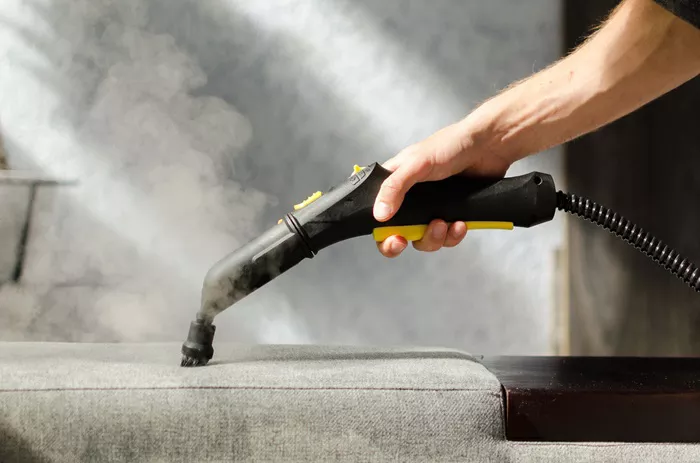Steam cleaners have gained popularity in recent years as a versatile and eco-friendly cleaning solution for homes and businesses. However, there is often confusion about whether steam cleaners truly disinfect surfaces. In this article, we will explore the science behind steam cleaning, its effectiveness in killing germs and bacteria, and the best practices for using steam cleaners to achieve optimal disinfection results.
Understanding Steam Cleaning
Steam cleaning involves using hot vaporized water to clean and sanitize various surfaces. The steam is produced by heating water to a high temperature, typically between 200 to 280 degrees Fahrenheit (93 to 138 degrees Celsius), and then releasing it through a nozzle or brush attachment. The heat and moisture of the steam are effective at loosening dirt, grime, and grease, making it easier to remove from surfaces.
How Steam Kills Germs
The primary mechanism by which steam cleaners kill germs and bacteria is through heat. High temperatures are known to denature proteins and disrupt the cell membranes of microorganisms, effectively killing them. The steam’s heat penetrates porous surfaces and crevices, reaching areas that may be difficult to clean with traditional methods.
Effectiveness Against Different Types of Germs
Steam cleaners are effective against a wide range of germs, including bacteria, viruses, fungi, and some parasites. However, the level of effectiveness can vary depending on factors such as the type of surface, the duration of steam exposure, and the temperature of the steam.
See also: Does Steaming Eliminate Odors? A Cleaning Expert’s Guide
Bacteria
Bacteria are single-celled microorganisms that can cause illness and infection. Steam cleaners are highly effective at killing many types of bacteria, including common pathogens like E. coli, Salmonella, and Staphylococcus aureus. The heat from the steam penetrates bacterial cells, causing them to rupture and die.
Viruses
Viruses are smaller than bacteria and can only replicate inside living cells. While steam cleaners can help in reducing viral contamination on surfaces, they may not be as effective against all types of viruses. Some viruses, such as norovirus and certain strains of influenza, are more resistant to heat and may require higher temperatures or longer exposure times to be effectively eliminated.
Fungi
Fungi, including mold and yeast, are another type of microorganism that can thrive in damp environments. Steam cleaners can help in controlling fungal growth by killing spores and disrupting their reproductive cycles. However, it’s important to note that steam alone may not always eliminate deep-seated mold growth, especially in porous materials like wood or drywall.
Parasites
Parasites are organisms that live on or inside other organisms (hosts) and rely on them for nutrition and survival. Some common parasites that can be found on surfaces include dust mites and certain types of worms. Steam cleaners can be effective at killing parasites on surfaces, but thorough cleaning and regular maintenance are also essential for preventing reinfestation.
Factors Affecting Steam Cleaning Effectiveness
Several factors can influence the effectiveness of steam cleaners in disinfecting surfaces:
Temperature: Higher steam temperatures are generally more effective at killing germs. However, excessively high temperatures can damage certain surfaces, so it’s important to follow manufacturer guidelines.
Contact Time: The longer the steam remains in contact with a surface, the more effective it is at killing germs. For heavily soiled or contaminated areas, allowing the steam to dwell for a few seconds can enhance disinfection.
Surface Type: Non-porous surfaces like tile, glass, and metal are easier to disinfect with steam cleaners compared to porous materials like fabric, upholstery, and unfinished wood. Steam may not penetrate deeply enough into porous surfaces to kill all germs.
Water Quality: Using distilled or demineralized water in steam cleaners can prevent mineral buildup and ensure optimal steam quality. Hard water can leave mineral deposits and reduce steam effectiveness over time.
Frequency of Use: Regular steam cleaning can help maintain a clean and sanitized environment. However, over-reliance on steam cleaning alone may not be sufficient for controlling all types of germs, especially in high-traffic or high-risk areas.
Best Practices for Using Steam Cleaners
To maximize the disinfection potential of steam cleaners, consider the following best practices:
Read the Manual: Familiarize yourself with the manufacturer’s instructions and recommended guidelines for using the steam cleaner. This includes information on suitable surfaces, steam settings, and safety precautions.
Preparation: Remove loose dirt, debris, and clutter from the area before using the steam cleaner. This allows the steam to penetrate the surface more effectively and prevents contamination of the steam cleaner’s attachments.
Test in an inconspicuous Area: Before steam cleaning an entire surface, test the steam cleaner in a small, inconspicuous area to ensure compatibility and avoid damage.
Use Proper Attachments: Different attachments, such as brushes, nozzles, and steam mop pads, are designed for specific surfaces and cleaning tasks. Use the appropriate attachment for the best results.
Allow Drying Time: After steam cleaning, allow the surface to dry completely before using or placing objects on it. This helps prevent moisture-related issues like mold growth.
Regular Maintenance: Clean and maintain your steam cleaner according to the manufacturer’s recommendations. This includes descaling, emptying and refilling the water tank, and replacing worn-out parts as needed.
Conclusion
Steam cleaners can be effective tools for disinfecting surfaces, thanks to their ability to harness the power of heat and moisture. While steam alone may not eliminate all types of germs, when used correctly and in conjunction with other cleaning practices, steam cleaners can help maintain a clean and hygienic environment. By understanding the science behind steam cleaning, considering factors that affect effectiveness, and following best practices, you can make the most of your steam cleaner for disinfection purposes.

